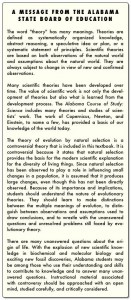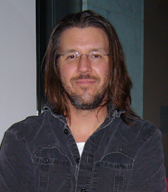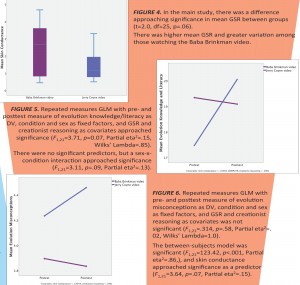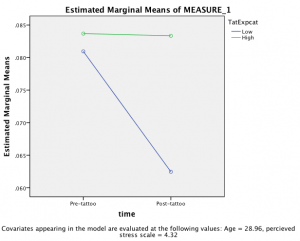Aletheia: I shall make two somewhat related contentions. First, science should never be suppressed, distorted, or otherwise manipulated for ANY reason. And second, political correctness has become a suffocating force on many college campuses, in many segments of society, and in many newspapers and magazines. At best, this political correctness is a burden, a cumbersome code that stultifies spontaneity and freedom by forcing students, professors, and journalists to translate their thoughts into acceptable platitudes. At worst, it is an intolerable tyranny, a Stalinist-like suppression of freedom of inquiry and expression that should be immediately eradicated. You can see, I presume, how these are related.
Justitia: Certainly! Well, I shall attempt to defend two basic propositions, then. The first is that science is a social tool; it is not an absolute, autonomous human activity. If a certain root of the sciences bears bad fruit, then that root should be inspected and possibly extirpated. I have no problem, in other words, with regulating science. And the second is that what many derisively call “political correctness” is actually an informal and organic system of rules that allows us to function together more harmoniously. We live in a multicultural society, a society of multifarious values, ideals, and peoples. Political correctness recognizes this and urges sensitivity. It is an organic code of caution. And it is certainly not the tyrannical force you depict.
Aletheia: Very good. I trust we will have an animated discussion then! Let me begin with this contention: Scientists should pursue only the truth. They should not be concerned with social justice, social fads, or political ideologies; at least, they should not be concerned with these things when acting AS scientists. Furthermore, they should not be pressured by outside forces to suppress their results, however disturbing to our sensitivities those results might be. Science is, I think, an enterprise that creates by first destroying. It is like a fire that purifies a forest by clearing the old and withered limbs of old and withered trees. Impervious to our hopes and desires, science, this radical fire, often destroys ideas we have come to love. And science therefore is often painful.
Darwin, for example, destroyed our notion that we were the center of creation, that we were different from other animals, higher than other animals, more “heavenly” than other animals. Many Victorians were disturbed by this Darwinism, this attempt to reduce us to mere creatures, mere matter, mere physical stuff!! William Jennings Bryan in the United States railed against Darwinism. An ardent moralist, Bryan believed that Darwinism’s crude materialism would ineluctably lead to moral decay, to selfishness, adultery, profligacy, a turning from responsibility and charity. And he tried to ban its teaching. Imagine that! Imagine a world without the theory of evolution by natural selection! And, imagine further the utterly ridiculous despair of this man! He truly believed Darwinism would erode society as he knew it. Of course, it did nothing of the sort.
Justitia: True, true! Poor William Bryan. He certainly picked the wrong side of that debate! But, his example does not vitiate the argument against absolute scientific freedom. Before making that point, however, please allow me to note that I am not against science. I think science is an absolutely wonderful tool. It has improved our lives in myriad ways. I am quite thankful for science.
Aletheia: Very well. I recognize your caution and your expression of admiration for science!
Justitia: Yes. But, unlike you–or what I understand of your argument–,I do not think science is a sacred pursuit that should transcend or somehow escape the cost and benefit analysis that we apply to other human practices. Take a different example. Consider an engineer. Would we suggest that an engineer should pursue his task without regard for the consequences, that he should, in other words, design buildings or bridges without concern for social consequences. I don’t think we would use this kind of thinking for any social activity, and I don’t think we should. It is religious, this absolute devotion to the “purity” of the scientific enterprise. Consider a different example. Suppose that we knew that the creation of a certain virus could absolutely destroy mankind. Would we encourage its creation simply because science should be “free” from the fetters that regulate all other human activities, should be limited, apparently, only by the blind pursuit of truth?
Aletheia: Well, I think the engineering example is different from the scientific enterprise. Science is the pursuit of the truth. Engineering is not. And truth is often offensive–it often shatters our hopes and expectations. That is why science needs protection. The most important scientific discoveries have been coupled with lamentations and hysteria, with calls for suppression, and if we had heeded those calls, we would have deprived ourselves of the greatest, most revolutionary scientific ideas of history. We should never let our petty emotions, our inability to cope with difficult ideas, bury freedom of expression and inquiry.
Justitia: I don’t deny that we are sometimes a shortsighted species. However, I think you read history incorrectly. Many revolutionary scientific discoveries required years of social adjustment. Prudence, I think, dictated caution to the founders of such discoveries. Darwin, for example, was judicious in his presentation of human evolution. He waited many years before he specifically addressed human evolution; and, he even waited many years before he published his first work on evolution by natural selection. Now, you may throw caution to the wind, insult the sclerotic conservatives who urge slow change, and encourage that we present science without sensitivity for social sensibilities, but I don’t think that is a productive strategy. And, moreover, I think it is positively wrongheaded from a moral perspective. I am, you see, a utilitarian. I think outcomes matter. I don’t believe any sphere of social activity, including science, should be removed from the world of difficult cost/benefit analyses.
Aletheia: Well, let me say that I do not think we should ignore social sensibilities. I am not, for example, urging that we write science articles without any respect for the current norms of society. I do not think we should write a headline that reads, “Men simply better than inferior women at spatial rotation.” Even if some of the substance of the headline is true, the expression is horrible and is certain to provoke hostility. Upon the other hand, I think the research itself should be conducted and that the results should be disseminated. And, this, I think, makes the connection to political correctness salient. Political correctness creates an atmosphere that discourages the dissemination of “dangerous” ideas, that softens people’s emotions and sensitivities, and that encourages the parading of injustices and offenses. In other words, it creates a social environment that cannot tolerate the truth.
Justitia: Great! We agree on at least one thing. We should at least be cognizant of current social norms. But I think that the very real sensitivities about many issues that have become “politically correct” preexisted the label; they are the result of years of real injustice. For example, for many, many years, women were treated as inferior creatures, soft, delicate, irrational–certainly too fragile for the tough pursuits of mathematics and science. This attitude still lingers like a miasmic cloud, poisoning many men’s (and possibly women’s) views of women. We should be cautious anytime we forward results that might appear to justify this belief. I know that you do not support such despicable beliefs, but many people are not so educated and privileged as you are. They do not have the luxury of a sophisticated understanding of bell curves and statistical distributions.
Aletheia: But isn’t that a kind of intolerable paternalism? I don’t think we should decide for people what they can and cannot handle or understand.
Justitia: But we do this all the time. We make smoking regulations, for example, and propagate powerful narratives about how unlikable and disgusting smoking is. This is straightforward manipulation. We could coolly and calmly disseminate the results of studies on smoking, abstaining from more conspicuous propaganda crusades. But we don’t. And I don’t think we should.
Aletheia: I am not sure that these are the same. But let me set that complaint aside for a moment. And let me raise an important, perhaps fundamental, challenge to your position. How do you know what is good or bad for society? How do you know the costs and benefits of scientific exploration? We can see how hysterical the early thinkers who confronted Darwinism were, and we can see how silly their alarmism appears in retrospect. Don’t you think some of your concerns about sex and race (typical topics of political correctness) will appear similarly ludicrous to later generations? Why not just guide science with a simple exhortation: seek the truth. We don’t know what will come of truth, but I generally tend to believe that the truth is better than a convenient or morally expedient fiction.
Justitia: I am sympathetic to your position, but I disagree with your fundamental hypothesis; or, put another way, I am not so convinced as you are that the consequences of our research are obscure or mysterious…are somehow shrouded or hidden from us. Of course, our predictions about future consequences are always tentative and uncertain. But that doesn’t mean we should entirely give up the project. Let me give you a concrete example. Suppose you lived in the antebellum South in the United States. Would you conduct research on race differences? My guess, before I let you answer, is that you wouldn’t. And the reason is clear. Any research you conducted would be twisted and appropriated by racists and would be used to aid and abet an unjust and horrific system of slavery. In other words, you would do a cost/benefit analysis of your research, and you would conclude that the costs of the research would outweigh whatever benefits it might offer. I would not consider that censorship; rather, I would consider that simple prudence.
Aletheia: Excellent point. But the fault in your example is the unjust social system, not the science, right? I mean, presumably the racists in the South would use anything to justify their racism, so the science would neither help nor hurt their cause. Put another way, if you removed my research, nothing would change about the social system. Or, let’s even adjust your example. Suppose that I conducted research that showed that blacks were more intelligent than whites. Would that change the social order in the South? Almost assuredly not. In fact, it might just convince the Southern plantation owners that their slaves should be eternally removed from books and learning because educated and intelligent slaves would pose a threat to the plantation system. In fact, this is exactly what many plantation owners did argue. Uncertain and underdetermined, the effects of science depend upon myriad social and cultural factors, and those factors should be the targets of those concerned with social justice, not science.
Justitia: Well said. And I do agree, at least to a large degree, that there are many other social factors that we should target to increase justice in the world. But I don’t see why we should exempt science from this list. The effects of science on society might even be as rain in a large sea, but they are not invisible. Even raindrops add up. Why not subject it–science–to the same considerations we subject other institutions and activities?
Aletheia: Well, I think we should. The institution of law, for example, is dedicated to principles of legality. A lawyer does not ask herself about the contribution of her defense to the greater justice of the world, or at least, she should not. She should only ask herself about the law in a particular, circumscribed case. And she would not (or should not) sacrifice a case for what she perceived as the greater good. Such behavior would, in fact, be a dereliction of her duty. In other words, institutions are designed to pursue their tasks, to entertain, to protect, to inform, et cetera, without a greater calculus of social justice. Science is no different. It should pursue the truth. If the consequences are pernicious, the fault is not with the science, but with the people who use the science. We do, in other words, hold science to the same standards that we hold other institutions. They are just not your lofty standards.
Justitia: I think many would object to your description of the law!! I realize lawyers aren’t always the most popular people in the room, but I think many do contemplate the greater good. And they should. We all should. Contemplating the moral consequences of a behavior or practice is not at all lofty, ethereal, majestic, or somehow beyond the reach of mortal minds. Part of our biological inheritance, moralizing behaviors and institutions is, rather, something we do automatically. Just as many plants grow to the sunlight, so too humans strive toward the good.
Aletheia: Allow me to interrupt your elevated rhetoric!! I am not at all convinced that humans strive toward the good. In fact, I think humans strive for power, prestige, status, and control. Morals might be, in some sense, natural–but they are not all that noble. Our history, after all, is bespattered with blood; it is full of grisly tortures, rapes, and desecrations.
Justitia: Ha..ha! I figured you would correct me my morose friend. I certainly agree that our history is full of examples of humans behaving badly. And that is, perhaps, precisely why we need to be careful about what we research. But allow me to broach the topic of political correctness again. I have read many articles lately lamenting the rise of the politically correct college campus. And I am afraid that I don’t think this is such a bad thing. Perhaps I might put it this way: The real alarmists are those who are repining about the supposed erosion of free speech on college campuses.
Aletheia: Well, first, allow me to make my final point about science. I do not think we can predict the consequences of our research. We simply have no idea. The future is a dark, black night stretching out before us, illumined here and there by flickering thoughts and speculations. Often, we do more violence when we attempt to suppress or manipulate science for a noble end than when we simply leave it alone. In fact, this is the fault of all utopian thinking.
Justitia: And if we could? I mean, would you in principle support suppressing some research if it could be shown that it would lead to positive consequences or that it could avert a disaster?
Aletheia: I simply cannot imagine such a scenario…
Justitia: Well, challenge your imagination! What about the nuclear bomb?
Aletheia: I think the nuclear bomb is a great example. And it illustrates precisely why we must pursue the science to its bitter end. Suppose the Americans had decided that the bomb was simply morally impermissible, a terror that should be aborted and then forgotten. What then? We now know that the Germans were nowhere near developing a functional nuclear weapon, but what if they were? Certainly they had no moral qualms about creating and using such a bomb. We simply cannot protect ourselves from knowledge. Reality is like an unkillable horror monster. It is always there, waiting. We can ignore it, perhaps deny it….but we cannot destroy it.
Justitia: Well said. I do not agree, but I do applaud your answer! Let us turn, now, to political correctness before ending this entertaining conversation. Do you really believe that political correctness is as deleterious as you suggested at the beginning of this conversation? Do you feel that you cannot be spontaneous, cannot engage in persiflage with your peers or friends, cannot really say what you think around most people at college?
Aletheia: I absolutely think that political correctness is pernicious. I am not sure I would say yes to your last questions, but there are many things that I do not feel comfortable doing because I am an academic. For example, I do not feel free to exchange ideas on social media because I am afraid that it will hurt my academic career. I am afraid to offend students ()because I doubt that the university would protect me. And there are many topics that I leave unexplored because I know that if I pursued them I would be slandered and stained by the obloquies of a very, very vocal minority.
Justitia: Well, I certainly do not support denigrating researchers or injuring their careers, at least I do not support those tactics in most cases. But that is not the focus of many articles that I read. These seem to object to the emotional emasculation of college kids. These fret and huff and bemoan the persistent coddling of college kids. These fear that college kids are too cowardly to confront dangerous or offensive ideas anymore. I simply disagree. This is not my experience. And, for what it is worth, I think sensitivity is a good thing. We should have safe spaces for formerly (and currently) persecuted minorities, for gays, lesbians, rape victims, et cetera. If students want to watch films of puppies and eat oatmeal cookies, I don’t see the harm. Especially if it makes them feel safe.
Aletheia: Well, I am certainly not going to judge a trauma victim. But I do think we have promoted a certain narrative that praises and encourages students to express offense and that weakens the mind. Students want to hide in a comforting cocoon, safe from challenging ideas. But the job of college instructors is to shatter that cocoon, to expose students to new ideas, to challenge their beliefs, to discomfit them! A professor should not be a nanny who babysits and protects students; she should be a stirring lecturer who provokes them with dazzling and sometimes dangerous ideas.
Justitia: Can we separate two distinct but often conflated practices, then? On the one hand, we have real support systems, safe places, and institutional structures designed to protect victims. And on the other we have the softening of ideas. The first you do not object to. The second you appear to abhor? Is that correct?
Aletheia: Not entirely. But I do think the distinction is important. It is not entirely correct because I believe that the first issue is somewhat related to the second. That is, we have begun to coddle students too much. And this coddling bleeds, inevitably, into the realm of ideas. Students expect to be comforted and pacified at every moment, so they naturally react with horror when they feel the discomfort of challenging ideas because, let us be honest, ideas can be disconcerting. It hurts to have one’s worldview shattered. I can still vividly recall losing my belief in the pieties of my youth. It was a wound more profound and more painful than any I have yet suffered physically. (Perhaps that says more about my luck than anything!)
Justitia: Ha..ha. Well, we are probably both lucky! I do agree that the first issue bleeds into the second, but I am afraid my calculations arrive at different conclusions from you. I think it is an almost untainted–and, note that I said almost!–good that students expect to be comforted and pacified at every moment. That is what progress is about, is it not? Of course, one could imitate a man from the 1600’s wildly raging about the complacency and narcissism of men from the 1950’s. “He has a refrigerator; how dare he complain that his coffee is not always hot. I had to work for twelve hours a day just to plant and harvest enough to eat for the winter!” How do you know you are not just one of these antiquated curmudgeons!?
Aletheia: I hope I have not yet become antiquated! I will confess that smart phones are almost too complicated for me.
Justitia: Oh shame! They are very user friendly!
Aletheia: I agree that it is a dubious practice to condemn the new generation for their comforts and luxuries. However, I think we should approach this scientifically.
Justitia: Of course you do!
Aletheia: The only way! So, we know that isolating trauma victims from possible trigger sources can actually prolong the healing process. Sometimes a wound needs a painful wash of disinfectant. So, in this case, it might actually harm people to hide them from all the dangerous and threatening things in the world.
Justitia: But who should decide? Should the student decide when he or she is ready to experience a potential trigger?
Aletheia: I do not object to some freedom for the student, but it must be reasonable. We should not have to sprinkle our lectures with trigger warnings. The Great Gatsby does not need a trigger warning for misogyny. All Quiet on the Western Front does not need a trigger warning for harrowing war scenes.
Justitia: But why object to providing students, the consumers, with information about material with which they are going to grapple? I don’t see the harm in providing a quick label to a lecture about war that it will contain lurid and grisly scenes and descriptions. Is that really a bad thing?
Aletheia: I am somewhat more comfortable with providing those kinds of warnings than I am with providing warnings for any potentially discomforting discussion. So, let me give a different example. What about a psychology professor who wants to discuss sex differences? Or, let us get more concrete and more controversial, what about a psychology professor who wants to discuss the adaptive value of rape? Should he have to caution his students?
Justitia: I don’t see why not.
Aletheia: Because it propagates the notion that such a topic is somehow forbidden or risky. It is not. It is a scientific question. We need to teach our students about the moralistic fallacy, and about how science works so that they learn not to see such topics as controversial. Rape may or may not be an adaptive strategy. Whether it is has nothing to do with its moral significance. I absolutely despise tornadoes. But they do exist. And it would be utterly idiotic to deny their existence.
Justitia: Well said. Again, I am not certain that I agree, but I will praise your thoughtfulness. Shall we continue this discussion in the future?
Aletheia: Most certainly. I thoroughly enjoyed it.











